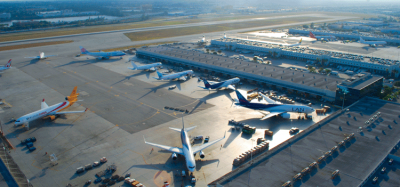Leaders’ Series: Ensuring the continued longevity of the aviation industry
- Like
- Digg
- Del
- Tumblr
- VKontakte
- Buffer
- Love This
- Odnoklassniki
- Meneame
- Blogger
- Amazon
- Yahoo Mail
- Gmail
- AOL
- Newsvine
- HackerNews
- Evernote
- MySpace
- Mail.ru
- Viadeo
- Line
- Comments
- Yummly
- SMS
- Viber
- Telegram
- Subscribe
- Skype
- Facebook Messenger
- Kakao
- LiveJournal
- Yammer
- Edgar
- Fintel
- Mix
- Instapaper
- Copy Link
Posted: 28 February 2019 | Karen Dee | No comments yet
The year 2019 will mark 100 years since the first UK commercial flight, 50 years since Concorde’s maiden voyage and 85 years since the Airport Operators Association was founded. As the Government now develops its Aviation Strategy 2050, Chief Executive, Karen Dee, reflects on how far we’ve come.


The first UK commercial flights by one of British Airways’ forerunners, Aircraft Transport & Travel Ltd, had space only for a few passengers – today, BA’s A380 can carry 469 passengers. Aviation then was for the few; even by the 1950s, there were only 30 flights a day from Heathrow, whilst during 2017, Heathrow saw an average of 1,299 flights a day. This shows how aviation has changed. From barely any passengers to 285 million passengers travelling through UK airports in 2017. From hardly anyone being able to afford to fly, to more than half the UK population flying at least once a year. From employing a handful of people, to a booming UK aviation and aerospace industry that employs more than a million people.
This growth has brought untold benefits which include supporting a thriving UK business community that ranges from tourism to exports. The Government’s planned Aviation Strategy projects continued growth to an estimated 435 million passengers in 2050. That has the potential to deliver more jobs and more opportunities for UK businesses and for passengers.
Meeting this demand for aviation is also a major opportunity for the UK aviation industry, but we cannot do this alone. For example, capacity growth – be that airspace modernisation, lifting of planning caps at individual airports, new terminals or even new runways – requires clear direction from Government. Otherwise, that lack of clarity could lead to indecision and major delays to the necessary upgrades of our infrastructure on the ground and in the sky.
Similarly, surface access improvements to airports are vital to ensuring everyone can get their journey started smoothly. Public transport improvements are particularly important in that context. That requires national and local government to work closely with transport providers. Yet in the Aviation Strategy, the growth necessary to meet demand sometimes appears to be taken for granted.
Clearly, there will be environmental conditions attached to any future growth of aviation. Our licence to grow depends on the industry being able to do so sustainably. Immense progress has already been made. The aircraft entering service today are an order of magnitude quieter than their predecessors and use less fuel to cover the same distances – reducing both cost and emissions.
The aerospace and aviation industries continue to invest in operational improvements and new technology, from sustainable aviation fuels through to the initial ideas for electric aircraft. These are actively supported by the Department for Business, Energy and Industrial Strategy, through initiatives like the Aerospace Growth Partnership. However, if we are to maximise the impact of such investments, it is essential that the Aviation Strategy recognises the great strides that are being taken. It also needs to deliver policies and initiatives that actively support the industry to continue making what are very significant commitments.
As we prepare aviation for the next 100 years, supported by thriving airports and great industrial innovation, the Aviation Strategy needs set out the benefits aviation growth can bring to the UK and how Government will support the industry to deliver growth in a sustainable way. An Aviation Strategy that provides that will stand the test of time.
Biography
Karen Dee is Chief Executive of the Airport Operators Association. Karen has 20 years’ experience in policy development, communications and representation activities. Her career spans roles in the Department for Transport, consultancy and trade associations such as the CBI, Road Haulage Association and, most recently, the Freight Transport Association, where she worked as Director of Policy.

















